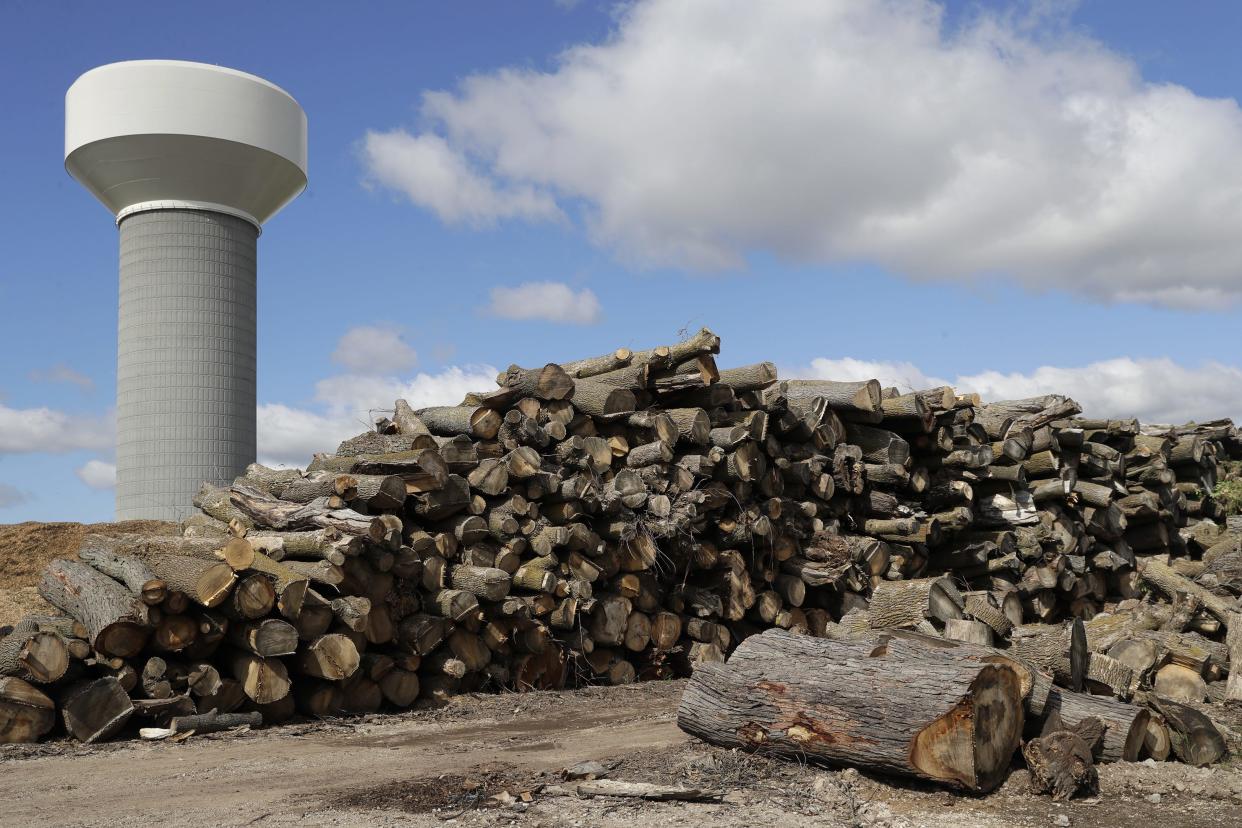Appleton sells logs from infected ash trees, now that all of Wisconsin is quarantined for emerald ash borer

Reader question: Ash trees infected by the emerald ash borer are being removed all over Appleton. What is the city doing with the wood? Does it have a procedure to prevent the insects from surviving and moving to other trees?
Answer: The handling of ash wood was a greater concern in the early stages of the emerald ash borer infestation.
For years the Wisconsin Department of Agriculture, Trade and Consumer Protection placed individual counties under quarantine once the invasive, wood-boring beetle was discovered there. The declaration made it illegal to move ash wood from a quarantined county to a nonquarantined county.
While the efforts slowed the spread, they didn't prevent the spread. Today, all of Wisconsin is under quarantine, so ash wood can be moved more freely within the state.
It remains illegal to move the wood out of state to nonquarantined areas.
RELATED: Appleton, Neenah aim for an annual net gain of trees, even with the destructive emerald ash borer
WATCHDOG Q&A: Duke Behnke answers your local government questions
Appleton City Forester Mike Michlig recalled the earlier protocols after Outagamie, Calumet and Winnebago counties first were quarantined.
"We were very careful about not moving anything," he said. "Any logs that we had, we would chip to their standards before we could move it, but at this point that's kind of out the window because everybody has it. It doesn't really matter."
The standards required ash wood to be chipped so that every piece was smaller than an inch in at least two dimensions before it could be moved and reused as mulch. Michlig said Appleton sometimes ran the wood through a chipper twice to ensure the emerald ash borer didn't survive.
Today, though, that's no longer required.
After Appleton forestry crews remove damaged, diseased or undesirable trees from city terraces or parks, they store the logs at the municipal services property on East Glendale Avenue.
Once or twice a year, the city sells the stockpile to the highest bidder. The wood can generate $2,000 to $3,000 per pile. None of the wood is landfilled.
"We sell it to loggers or contractors that process it and use it either for lumber or firewood or whatever they choose," Michlig said.
The emerald ash borer has killed tens of millions of ash trees across the Midwest. The larvae feed on vascular tissues under the bark of ash trees, interrupting the flow of nutrients and water, effectively starving the trees.
Post-Crescent reporter Duke Behnke answers your questions about local government. Send questions to dbehnke@gannett.com or call him at 920-993-7176.

SUPPORT LOCAL JOURNALISM: Our subscribers make this coverage possible. Click to see The Post-Crescent's special offers at postcrescent.com/subscribe and download our app on the App Store or Google Play.
This article originally appeared on Appleton Post-Crescent: Appleton stockpiles wood from felled trees, sells it to highest bidder

